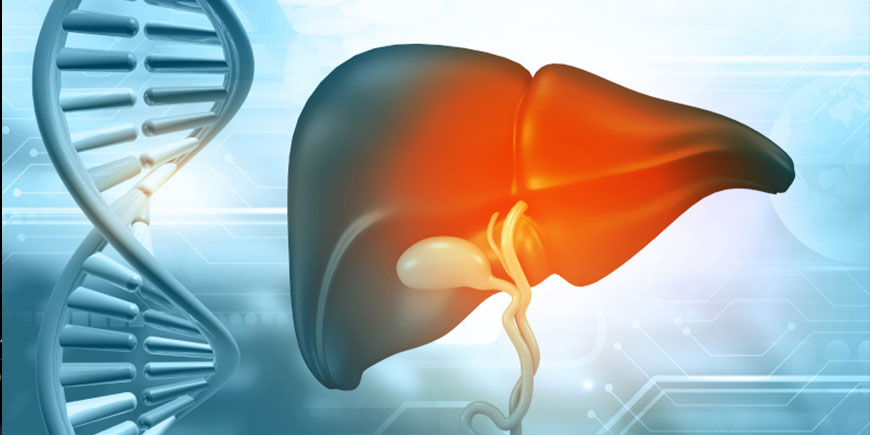Personalised, tailored, targeted: The new precision medicine promises high diagnostic and therapeutic accuracy
The “new” precision medicine aims to prevent or detect any disease as early as possible and to provide the most appropriate treatment based on the needs and characteristics of each patient.
Personalised medicine
Over the past thirty years, fundamental innovations in molecular biology, biotechnology, genetics and informatics have led to significant advances in the personalisation of treatments. This is why we hear more and more about personalised medicine.
Although there is no single definition, it can be described as a comprehensive approach to the prevention, diagnosis, treatment and monitoring of disease based on an individual’s genetic and other characteristics.
The basic idea is that each individual’s genome, in interaction with the environment, imparts unique characteristics to complex diseases that can be diagnosed and treated more efficiently and effectively.
Omics Sciences
In the early 1990s, the launch of the Human Genome Project gave a major boost to personalised medicine. It soon became clear that knowledge of individual genes alone was not sufficient to define or predict the onset of a disease. Many other pieces of information about the characteristics of the genome and its expression are needed. These pieces of information, known as “omics data”, are studied in the “omics sciences”, which include:
- Genomics: the analysis of the entire set of genes;
- Transcriptomics: the analysis of the entire set of transcripts, the intermediate molecules between genes and proteins;
- Proteomics: the analysis of the entire set of proteins;
- Metabolomics: the analysis of the entire set of metabolites, the intermediate products of various cellular processes.
The omics sciences require innovative information technologies capable of rapidly analysing vast amounts of data. From these complex analyses, it is possible to construct detailed disease profiles and identify specific treatments for individuals who share these profiles.
We now know that at least three environmental factors constantly interact with our genes: diet (micro- and macronutrients), physical activity (exercise) and emotions (stress). Human adaptability to these elements is rooted in genetic variations acquired through evolution, which highlight the differences between individuals or populations at both genomic and cultural levels.
Areas of application for personalised medicine
Personalised medicine is an emerging approach in many clinical areas, although its most significant development has been in oncology.
In recent decades, technology has advanced to the point where tumours can be diagnosed and classified not only on the basis of their location in the body and tissue characteristics, but also on the basis of genetic features.
In many cases, by analysing the genes of a person with cancer, it is possible to guide the choice of therapy towards more targeted treatments. There are many examples of therapeutic success using this approach.
Genetic variations and liver disease
In areas beyond oncology, personalised medicine is of strategic importance for improving therapies for patients with liver disease. This is highlighted by a recent study published in Frontiers in Nutrition.
Many studies have identified specific genetic variants associated with liver disease. Some of these polymorphisms are associated with high dietary preference for carbohydrates or lipids, poor dietary behaviour (excessive alcohol consumption) and hepatotoxicity (caused by drugs or toxins).
The prevalence of these aetiologies varies considerably from country to country due to genetic, environmental and cultural differences between populations. The extent of liver damage may be immediate and acute, or it may progress to chronic stages where the inflammatory process leads to fibrosis, cirrhosis and, in rare cases, hepatocellular carcinoma.

Strategies to monitor fibrosis are essential for early diagnosis. Non-invasive blood-based methods, such as liquid biopsy, could be used to stratify patients by risk and could be combined with imaging techniques.
New tools such as magnetic resonance elastography (MRE), a technology that combines MRI imaging with low-frequency vibrations, are valuable allies in detecting liver disease. Personalised medicine allows doctors to identify the cause or predict the risk of disease and design a tailored plan to prevent or detect disease at an early stage.
The study in question
In the study published in the journal, the researchers examined the population of Mexico, facing several challenges due to the country’s high level of genetic admixture. Specifically, they found that
- The northern region has a higher proportion of people with European features.
- The central region has intermediate rates.
- The southern region has a higher prevalence of Amerindian traits, including true Native Americans.
African ancestry is present in varying degrees among the general mixed population and among the Afro-Mexicans living in the coastal communities of the southern Pacific and Gulf of Mexico.
There is very little data on Native American ancestry in the Genome-Wide Association Studies (GWAS) database. Most of the studies in this database have been conducted in European, Asian and African populations.
Nevertheless, the data from the Mexican Biobank highlighted relevant clinical associations. In particular, the study identified 25 associations in 15 genes involved in lipid metabolism and transport, vitamin A metabolism, protein folding, gene expression regulation, cellular signalling and embryonic development. This provides information on hypercholesterolaemia, hypertriglyceridaemia, body weight, creatine levels, hypertension and arthritis.
Globalisation and nutrition
An important factor in the gene-environment equation is diet.
Since the time of the Aztecs and other pre-Hispanic peoples, Mexico has been known for its three main crops: corn, beans and chilli peppers, as well as squash, tomatoes, amaranth and chia. The inverted food pyramid typical of the Mexican diet has leafy greens and wild fruits at the top, grains in the middle and animal flesh at the bottom. This means that meat was consumed in smaller quantities due to the limited practice of animal husbandry.
Globalisation and urbanisation have brought about a significant change in Mexico’s diet. There has been a noticeable shift towards a hepatotoxic diet, characterised by the consumption of ultra-processed foods, poor dietary habits and an imbalance of fatty acids, vitamins and minerals. This transition has contributed to a higher prevalence of liver disease in the population.

Analysis of data from the National Health and Nutrition Survey revealed that a substantial 68% of the Mexican population follows a Western dietary pattern, compared to only 7% who follow a traditional Mexican diet. Currently, 72.1% of the Mexican population is overweight or obese.
This risk factor, combined with genetic susceptibility, has led to an increased incidence of cardiovascular disease, type 2 diabetes, cerebrovascular events, liver disease and cancers (breast and prostate).
The role of diet
Nutrition has a significant impact on patients with chronic viral hepatitis, particularly hepatitis B and C. These patients have specific nutritional needs to prevent further liver damage due to genetic susceptibility and harmful dietary habits.
A diet rich in fish, seafood and vegetable oils, along with the introduction of micro- and macronutrients such as resveratrol, vitamin E, lactoferrin, curcumin and moringa extracts, can positively influence the outcome of viral infections. In combination with pharmacological treatment, these nutrients provide valuable support in the fight against hepatitis. These nutrients are readily available and are found in foods typically consumed by local people.
The effectiveness of nutritional therapy depends primarily on the patient’s ability to adopt a healthier diet, but also on the genotype of the hepatitis they have contracted and their ethnicity.
Sources and Data
- Personalized medicine and nutrition in hepatology for preventing chronic liver disease in Mexico. Front. Nutr . 11:1379364. doi: 10.3389/fnut.2024.1379364


